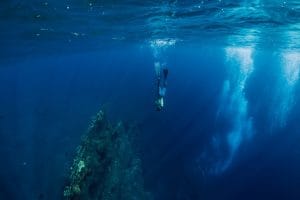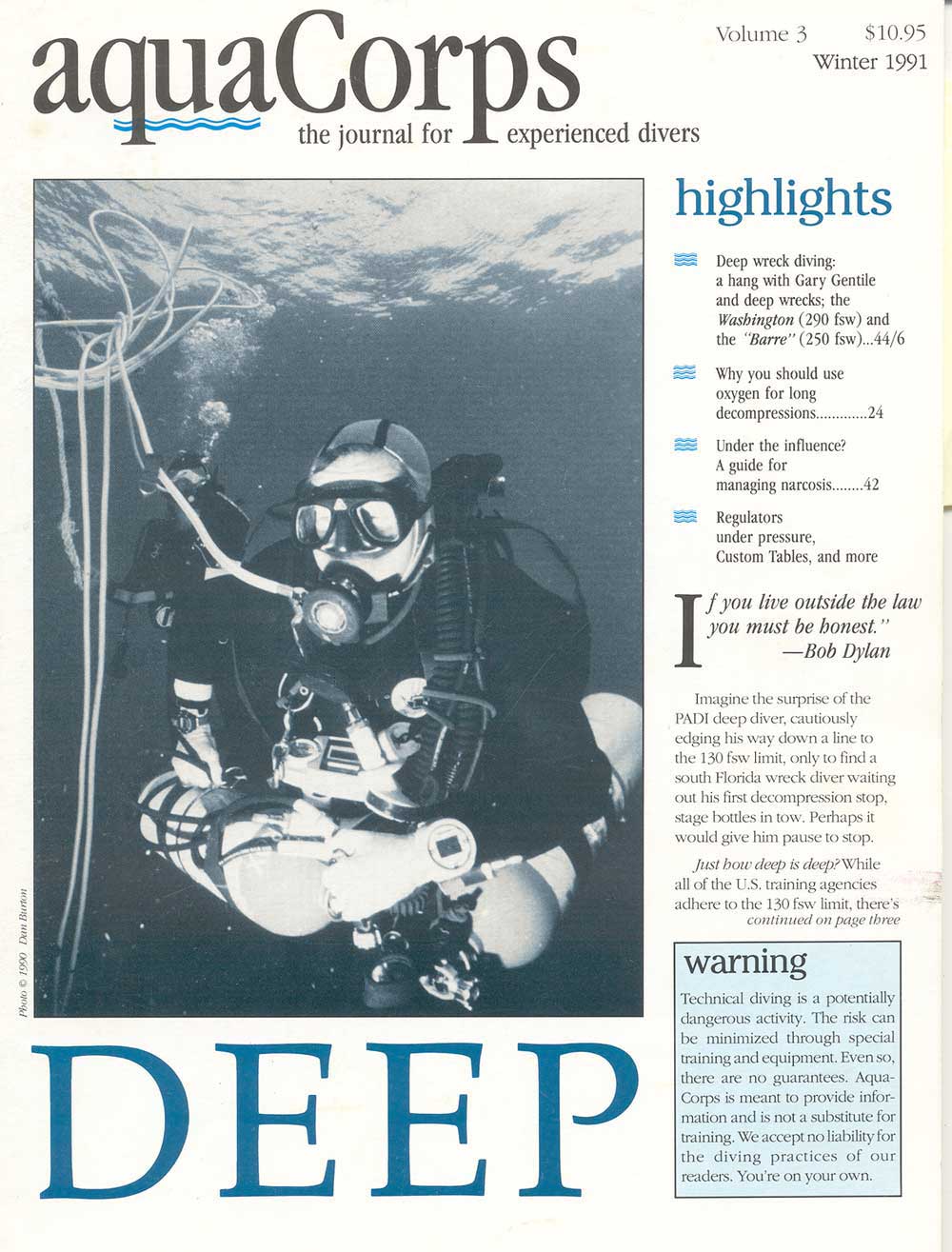
Why Scuba Divers Should Try Freediving: A Personal Perspective from an Scuba diving and Freediving Instructor
Hey everyone, I’m Matt, co-director of OceanSense Freediving here on the Sunny Coast. Over the

“The best way to predict the future is to invent. This is the century to be proactive about the future!” Alan Kay, Stanford Computer Forum, 1987
In the late 1980s and early 90s there were small groups of very experienced divers in the cave, wreck and open water communities venturing out beyond the “recreational sport diving limits” (no-stop dives in the 0-130 ft/40 m range) conducting deeper and longer staged decompression dives. Some veteran cave divers were beginning to use helium mixes and nitrox along with oxygen for decompression, with the help of diving physiologists like Dr. Bill Hamilton who provided special mix tables. Others like the Northeast wreck divers were doing deep air dives and in some cases using oxygen for decompression if they were smart. Others were making deep reef excursions.
The problem was that almost all of this diving was “in the closet.” It wasn’t talked about in wide circles, written about in the diving press, or discussed at dive industry forums like the Diving Equipment and Marketing Association (DEMA) Show. It was understood that if you were doing this kind of diving you kept it to yourself lest you be blamed, shamed, or worse: lead the innocent to slaughter. There was no forum to exchange information and ideas, and there were no training courses. Unfortunately the absence of information made divers less safe!
I started “aquaCORPS Journal” in January 1990 to change that.
I had begun doing relatively deep (45-60 m/150-200 ft) decompression dives in California in the late 80s with a citizen-science group, Cordell Expedition that conducted biological surveys and studies on the sea mounts off the Big Sur Coast. I was so excited about the dives and what we were doing that I wanted to write about it and queried a number of magazines. No one wanted to touch it. Eventually a California-based magazine called “Discover Diving,” agreed to publish my article but not without caveats and warnings on every page. I was also introduced to cave diving and got a copy of Bill Stone’s “The Wakulla Springs Project” (1987) book, which absolutely blew my mind.
“You can do that?”
It was clear to me from my experience working in the computer industry that what was going on in diving was nothing short of a technological revolution, like the personal computer (PC) revolution in the world of computing. Essentially, technologies that had been limited to government and commercial users, like mixed gas and rebreathers, were being re-scaled for consumer use.
I was hooked.
I wanted all the information I could get my hands on and given the state of the diving press at the time, it seemed the best way to do that was to start my own publication.
In that first issue of aquaCORPS we featured an article by Bill Hamilton titled, “Call It High-Tech Diving.” We also referred to it as “advanced diving” and “professional sports” diving. At the time, we didn’t really know what to call this new form of recreational sport diving that cut across traditional diving communities; none of the names seemed to work and nothing was sticking.
It was also clear that we needed to distinguish this form of diving as separate and distinct from recreational sport diving. The recreational sport diving industry was not happy that deep diving and decompression—the “D-Words”—were out of the closet and they didn’t want to have anything to do with it. They were rightfully concerned that if there were an increase in diving fatalities the government would intervene and remove the recreational diving exemption from Occupational Safety & Health Administration (OSHA).
At that time, I had several friends who were rock climbers and involved in what was then called, “technical climbing,” where individuals used ropes and protection to tackle rock faces that could not otherwise not be climbed. The word “technical” had all of the right connotations. I even imagined that “technical dives” might one day be rated by degrees of difficulty and or exposure in the way that climbers graded rock climbs i.e. a 5.11 climb, using the Yosemite Decimal System (YDS) developed by the Sierra Club.
So, I pinched the term for diving, using “technical diving” for the first time in aquaCORPS #3 DEEP published in January 1991.
Later that year, Drew Richardson, then a vice president of PADI, penned an article, “Technical Diving—Does PADI Have Its Head In The Sand?” for PADI’s “Undersea Journal,” which helped legitimize tech diving as distinct from recreational sport diving.
And the name stuck!
Michael Menduno is an award-winning journalist & technologist who has written about diving and diving technology for more than 25 years and coined the term “technical diving.” He founded and edited aquaCORPS: The Journal for Technical Diving (1990-1996), which helped usher tech diving into the mainstream of sports diving. He also organized the first Tek, EuroTek and AsiaTek conferences, and Rebreather Forums 1.0 and 2. Menduno remains an avid diver based in Palm Springs, Ca.
View original article by visiting: https://www.tdisdi.com/how-tech-diving-got-its-name/

Hey everyone, I’m Matt, co-director of OceanSense Freediving here on the Sunny Coast. Over the
Join us Thursday 30th Jan at 5:30pm to hear David Mullins talk about nudibranch defences
Dear members, I would like to take this opportunity to inform you about a few